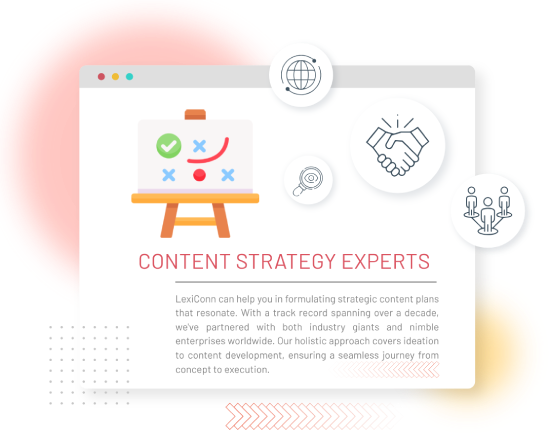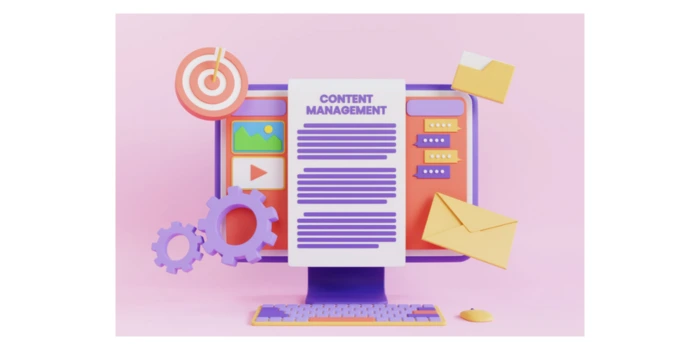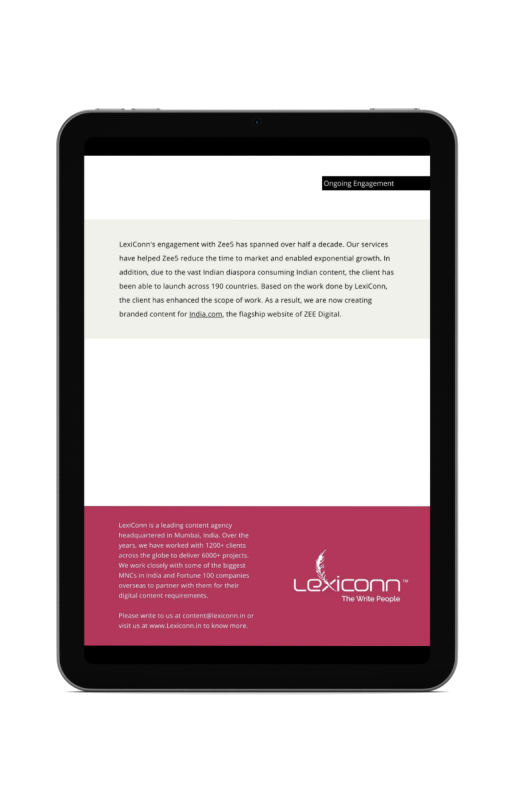

Your website is your digital storefront, and in an era where attention spans are shorter than ever, engaging and effective content is crucial. But how do you know when it’s time for a content overhaul? If you’ve noticed declining engagement, lower search rankings, or outdated information, your content might be working against you rather than for you.
Website content is often misunderstood, leading to several myths that can hinder a brand’s digital success. Many businesses assume that once content is published, their work is done, but in reality, content is a dynamic element that requires continuous refinement.
One of the most common misconceptions is that having a website alone is enough to attract visitors. Many believe that as long as a website is live, search engines will automatically drive traffic to it. However, without high-quality, optimized, and regularly updated content, a website is unlikely to rank well in search results or hold users’ attention. Good content isn’t just about filling pages with words—it’s about delivering value, answering user queries, and keeping visitors engaged.
Another widely held myth is that longer content is always better. While long-form content can be beneficial for in-depth topics, length alone doesn’t guarantee success. Quality trumps quantity every time.
A concise, well-structured 500-word article packed with relevant insights and engaging language can perform far better than a 3,000-word article filled with fluff. Search engines and readers both prioritize clarity, relevance, and usefulness over sheer word count. Similarly, many businesses assume that updating a website’s design is enough to refresh its presence.
A sleek, modern layout may attract initial interest, but if the content remains outdated, poorly written, or irrelevant, users will quickly lose interest. Content and design must work in harmony to create a compelling user experience.
There’s also a common belief that website content should be stuffed with keywords to rank higher on search engines. While keywords are important for SEO, excessive keyword usage—known as keyword stuffing—can actually harm rankings.
Search engines prioritize natural, well-written content that genuinely helps users, not content crammed with awkwardly placed keywords. Modern SEO focuses on user intent, meaning content should be written with the audience in mind rather than manipulating search algorithms. On the flip side, some businesses think SEO doesn’t matter at all and that great content alone will drive traffic. While high-quality content is crucial, ignoring SEO best practices like meta descriptions, headings, and internal linking can limit a website’s visibility.
Another persistent myth is that once content is published, it remains effective indefinitely. The digital landscape evolves rapidly, and content that was relevant a year ago may be obsolete today. Businesses that don’t perform regular content audits risk losing credibility and engagement. Updating existing content with fresh insights, new data, and modern examples helps maintain its relevance and effectiveness.
Some also believe that only blog posts contribute to content marketing success, ignoring other valuable formats like videos, infographics, case studies, and interactive tools. A well-rounded content strategy involves diverse formats to appeal to different audience preferences and learning styles.
Lastly, many brands assume that website content is purely informational and doesn’t need to be persuasive. In reality, content should be designed to guide visitors through a journey, whether it’s educating them, solving a problem, or convincing them to take action. Engaging, well-crafted content builds trust, enhances credibility, and drives conversions. Understanding these myths and replacing them with effective content strategies can significantly improve a website’s performance and overall digital impact.
A strong website content strategy ensures your website remains relevant, informative, and compelling. But recognizing the need for an update isn’t always straightforward. Here are ten unmistakable signs that your website needs a content overhaul and how addressing these issues can enhance your brand’s online presence.
Engagement metrics like time spent on pages, bounce rates, and click-through rates reveal a lot about how visitors interact with your content. If you’ve noticed a steady decline in these numbers, it’s a red flag.
Visitors who find content outdated, unengaging, or irrelevant won’t stick around. Instead, they’ll leave and look for better sources. Regularly updating content with fresh insights, compelling headlines, and interactive elements can make your website more engaging.
How to Fix It:
A website that still mentions trends from 2018 or references obsolete technologies signals negligence. Outdated content can not only mislead users but also damage your credibility.
For example, if you’re an SEO agency still emphasizing keyword stuffing as a best practice, your expertise will be questioned.
How to Fix It:
Your bounce rate reflects how many visitors leave your website after viewing just one page. A high bounce rate means users aren’t finding what they need or aren’t compelled to explore further.
Content that lacks depth, relevance, or engagement often results in users leaving within seconds.
How to Fix It:
Your website’s primary goal is to convert visitors into leads, subscribers, or customers. If conversions are decreasing despite steady traffic, your content may not be persuasive enough.
Content should educate, build trust, and encourage action. If it fails to do so, a content strategy overhaul is necessary.
How to Fix It:
If different pages of your website sound like they were written by different brands, it creates confusion. Inconsistent tone, language, and messaging weaken brand identity.
Whether your brand voice is formal, conversational, or witty, consistency across all pages is essential.
How to Fix It:
Has your website lost its top position on search engines? If yes, your content might be outdated, poorly optimized, or not valuable enough for users.
Google prioritizes fresh, well-structured, and high-quality content. If your rankings are dropping, it’s time to update your content to align with SEO best practices.
How to Fix It:
Have you introduced new services or discontinued old ones but never updated your website? A mismatch between what you offer and what’s listed on your site confuses potential clients.
Imagine an e-commerce store that still promotes discontinued products—this leads to frustration and lost opportunities.
How to Fix It:
How to Fix It:
If your competitors’ blogs and web pages rank higher, drive more engagement, or offer more valuable insights, your content is lagging.
Regularly analyzing competitor content can help identify gaps in your strategy.
How to Fix It:
A visually stunning website means nothing if the content remains outdated. Content should evolve alongside design to ensure relevance and alignment with modern user expectations.
For instance, a website with an interactive layout but text-heavy, jargon-filled content creates a disconnect.
How to Fix It:
Your website’s content is more than just words on a page—it is the foundation of your online presence and a critical factor in your website’s growth. A well-crafted content strategy doesn’t just attract visitors; it engages them, builds trust, improves search rankings, and ultimately drives conversions. Whether you’re running an e-commerce store, a service-based business, or a personal brand, high-quality content is essential for long-term digital success.
Good content plays a direct role in improving your website’s visibility on search engines. Search engine algorithms prioritize content that is relevant, valuable, and updated regularly. By incorporating SEO best practices, such as keyword optimization, high-quality backlinks, and structured formatting, your content can help your website rank higher in search results.
For instance, a business blog that consistently publishes informative, well-researched articles will attract organic traffic over time. Search engines recognize websites that provide authoritative content, increasing their chances of appearing in top search results.
Key SEO Benefits of Quality Content:
Once visitors land on your website, engaging content ensures they stay longer and explore more pages. If your content is informative, visually appealing, and easy to read, users are more likely to interact with it, whether by clicking through different sections, reading multiple articles, or subscribing to a newsletter.
User engagement metrics like time on page, bounce rate, and session duration are crucial indicators of content quality. Websites with engaging content keep users hooked, increasing the chances of return visits and conversions.
Ways to Enhance Engagement with Content:
Visitors are more likely to engage with and return to websites that establish authority in their niche. High-quality content—whether in the form of blog posts, case studies, whitepapers, or testimonials—demonstrates expertise and builds credibility.
For example, a financial services website that publishes well-researched guides on investment strategies positions itself as a trusted source of information. Similarly, a technology brand that shares insightful industry trends fosters confidence among its audience.
How to Build Trust Through Content:
Ultimately, a website’s growth isn’t just about attracting traffic—it’s about converting that traffic into tangible business results. Content that educates, informs, and persuades users can significantly impact lead generation and sales.
A compelling call-to-action (CTA) at the end of a blog post, an informative product description, or an engaging email campaign can guide users toward making a purchase, signing up for a service, or contacting your business.
Ways to Improve Conversion with Content:
Recognizing these signs of ineffective content is just the first step. Implementing an effective website content strategy ensures your website continues to attract, engage, and convert visitors.
At LexiConn, we specialize in content strategy, helping businesses craft compelling, high-performing content that resonates with their target audience. Whether it’s a complete website rewrite, a strategic content refresh, or SEO optimization, we ensure your digital presence stays ahead of the curve.
Ready to transform your website? Contact LexiConn today for a content consultation.
Book a FREE 30-minute website audit consultation today. Visit www.lexiconn.in or email [email protected] to get started.



I have read and accept the Privacy Policy
Read More